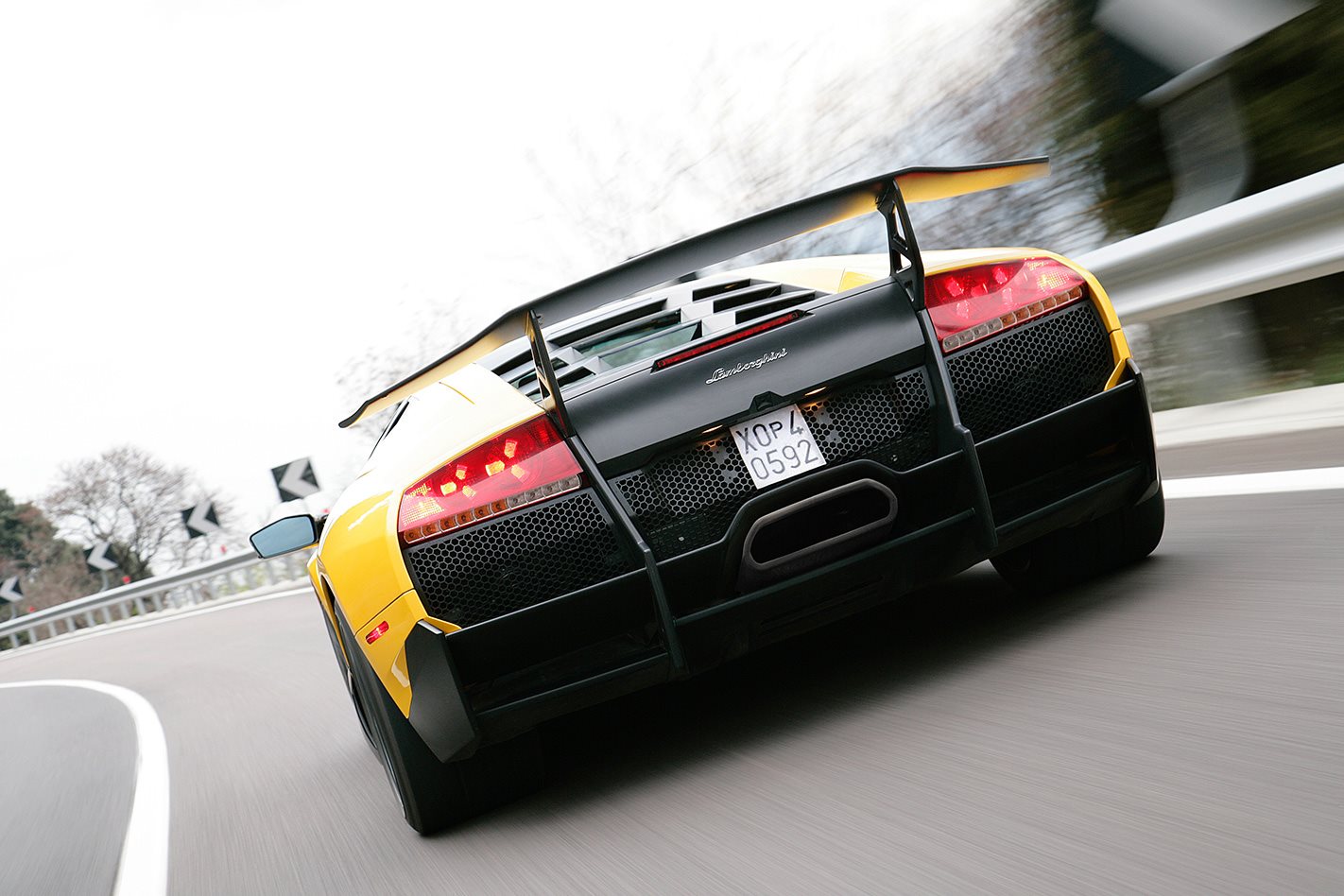The standard Lamborghini Murcielago LP640 has been one of the world’s fastest production cars since the day it first rolled out of the black gates in Sant’Agata.
But today, it’s been made to feel ordinary, and by none other than Lamborghini itself. Somewhere inside the glass-fronted Lambo brains trust, someone thought the heaviest hitter in the Lamborghini story needed more muscle. And speed. And grip. And, to further minimise the slim chances of anybody mistaking the Murcielago for anything close to subtle, they wanted to make it even more obvious in traffic, too.
So they’ve given it more engine, more orange, more black, more wing, more carbonfibre and less of anything you might use in daily life, all in the singel-focused pursuit of transforming the ultimate Murcielago into the, umm, ultimate Murcielago.
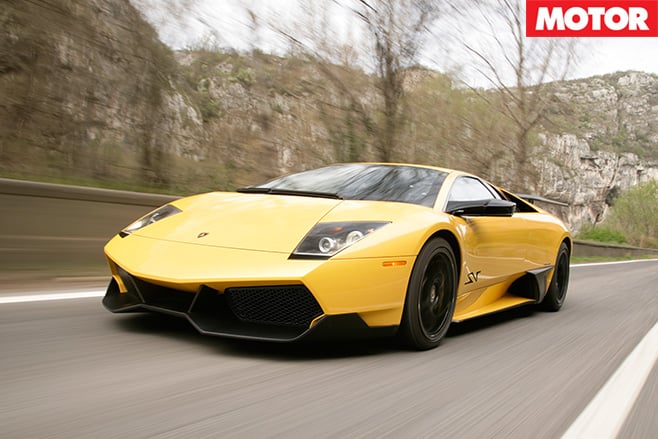
Clearly, it’s not the retiring-with-a-good-book type. Bright orange with a massive rear wing, a deep front splitter and the letters ‘SV’ plastered along the doors, it’s not meant to hide anywhere.
Of course, orange isn’t the only colour you can have yourself an SV in. They also come in shades of white, grey, yellow or, of course, black or, for the price of a mid-sized Japanese car, they will paint it matte-black or matte-white for you. None of which seem to be demonstrably less showy than the stock agent’s orange.
You could be forgiven, then, for thinking it might be a bit of a Look-At-Me sticker and paint special, but it would be a big mistake to sell it that short. There’s 20 Pferdestärke more engine, of course (hence the 670, which equates to 493kW), but it is only a small part of the SV story.
More important is what is not here. While the Murchie’s 471kW never had real problems moving its 1665kg, the easier way to even-greater speed is to shed anything not deemed totally necessary, and that includes mechanical as well as cabin pieces.
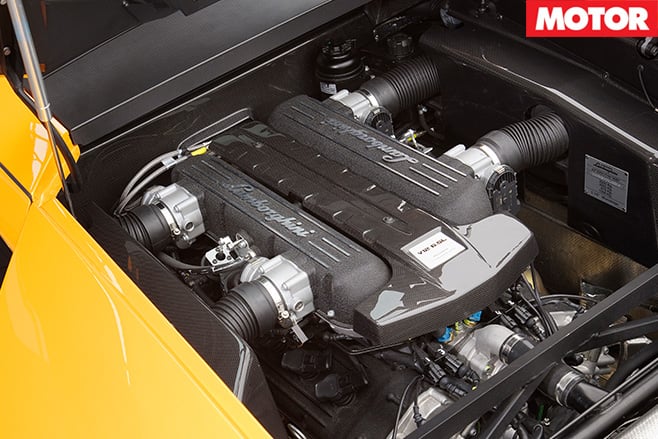
The carpet has been jettisoned and the march of carbonfibre throughout the interior (it smothers the transmission tunnel and the floor) is stopped only by the lightweight Alcantara layered across both the dashboard and roof. Even if you do not like the cockpit’s Spartan appearance, you just cannot argue againts the benefits of 34kg in weight savings.
But some of the other areas of attack are just as impressive. Losing the motors for the pop-up rear spoiler shaves 13kg, while the front and rear quarter-panels are now carbon, too. Even the casing for the rear brake light is carbon.
Then the engineers got serious. Replacing the tubular steel chassis with something lightweight was beyond the budget, but they have modified it heavily. They have recalculated for the increased loads the extra speed and grip would generate and changed to a freshly developed, high-strength steel which also shaves 20kg from the standard car.
They’ve even poked around inside the engine bay, chopping away at brackets here and trimming whizzing bits there until they successfully turfed out 33kg, mostly courtesy of a new lighter, louder exhaust system.
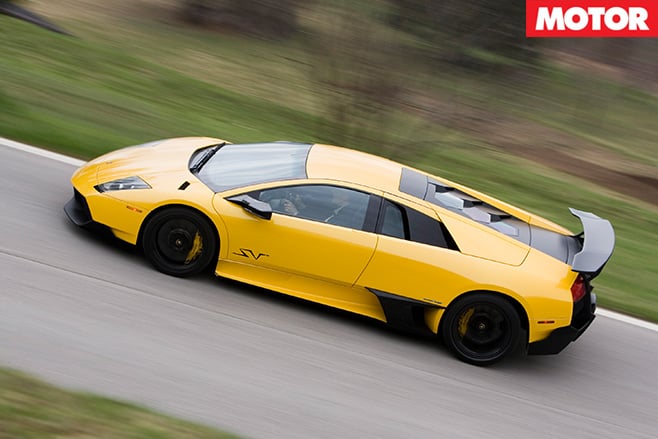
That will be a sad day because, while its exhaust emissions are pretty awful, its noise and vibrations and all-pervading timbre changes are awesome, playing on your back, backside, legs, hands, feet and your ears as well.
Fire the engine on the SV and there’ll be a high, whizzing sound followed by the loud, urgent bark of the 12 pots catching fire. Then you’ll find much the same pump-drive-dominated whirr playing just over your shoulder – until you blip the accelerator pedal and hear the four giant throttle bodies hiss open. If anything, they seem louder than the standard Murcielago and you can feel them open by the way it tries to twist the chassis under torque.
The chrome-gated six-speed manual is standard, but our test car had the optional E-gear paddle shift gearbox fitted, which is a no-cost option. As soon as you pluck a gear, though, the thin-seated SV feels different. It is somehow smoother and there are fewer vibrations running into your spine, but it is no quieter. It feels slightly stronger at around-town speeds, too, because you need less throttle to motivate it than you do in the regular model.
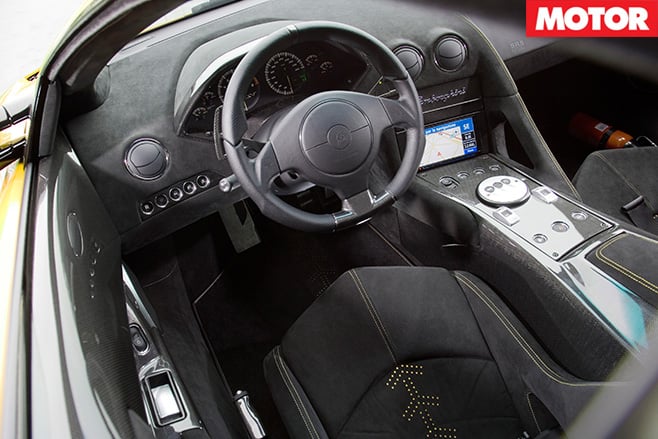
The brutal V12 rises in revs to around 5000rpm and then you release the brake pedal and the world just turns stupid. Instead of a stripped-bare show pony, the SV explodes, with all four of the enormous Pirelli Corsas evaporating in a smoke cloud. The throttle bodies are wide open now, and the intake roar is as loud as the exhaust’s ripping, metallic, angry blast.
You actually have to come off the throttle a touch because, as one American tester found, it will wheelspin basically all the way through 400 metres in first and second gears if you don’t. Enough power? You’d better believe it.
It’s a difficult balance, though. Get it wrong and you’ll either come off too much and bog the thing down or you won’t come off enough and then nobody will see you for the blue cloud of smoke. Get it right, though, and the SV is vicious, bursting to 100km/h in a genuine 3.1 seconds. I saw the data logger, so you can make it move even faster than Lamborghini’s 3.2-second claim.
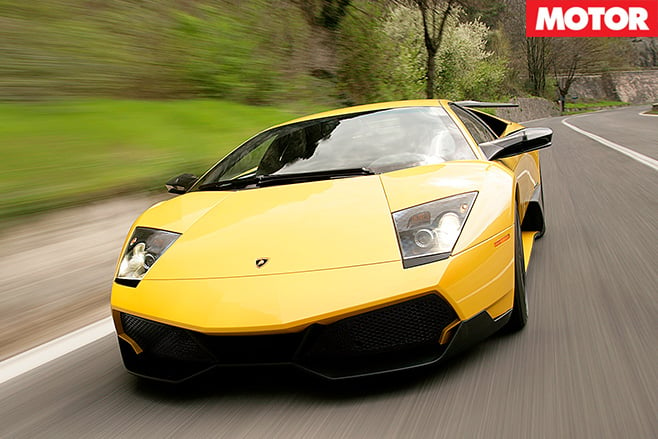
The boffins have fiddled with the intake system, including massaging the V12’s inlet timing and increasing its valve lift, while the exhaust also helps in picking up the extra 22kW at 8000rpm. But, crazy as it sounds, the Murcielago’s V12 hasn’t ever really been about power.
Like the standard V12, the SV’s engine is strong on torque and though its 660Nm peak hits at a high 6500rpm, it is never really lacking for twist anywhere across the rev range and nobody should feel limp-wristed for short shifting the V12 to stay in the torque band.
The updated engine is very free and has all but eradicated all of those wonderful tremors and nuanced harmonics, replacing them with raw urgency and a lovely squirting sound to back up the added feeling of aggression to its entertaining elasticity.
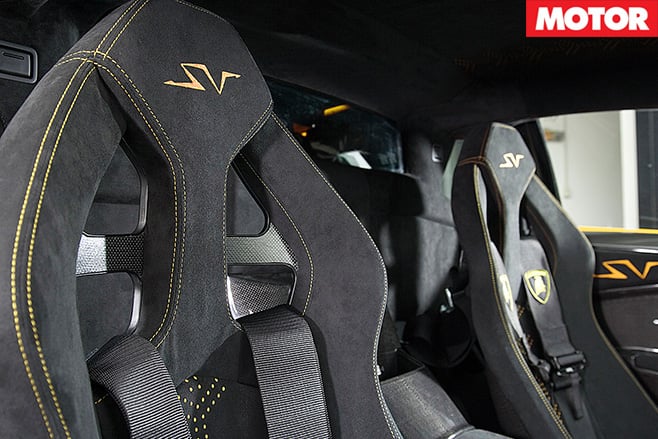
The real benefits of this car are immediately obvious the instant you turn it into a corner. Because it’s so much lighter and it has been developed so comprehensively, it just feels like an entirely different animal.
Compared to the stock Murcielago, the steering is simply wonderful. The standard car’s steering is not light and not communicative, even though it is accurate. This one is just brilliant. It is beautifully weighted and has actual feedback – more, even, than the Gallardo – and keeps you informed at high and low speeds about what is going on under those massive 18-inch P Zero Corsas.
But that is only part of the reason why the SV is very fast and very stable. We are now talking about a car that is so incredibly agile and inspires more confidence from its driver in the front half of a corner than any Murcielago before it. Actually, more than any Lamborghini before it.
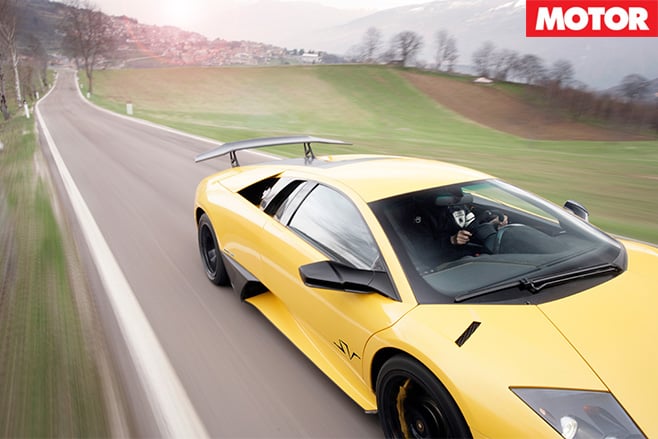
Usually, it will understeer early on, then you feel the weight move across the rear axle and you know it is set and ready to fire the viscous-coupling centre-diff into all-wheel-drive action. Sometimes it will come in with a bit of drift from the rear, but the monster rear boots catch it back up before you get bitten.
And, in the 380mm carbon-ceramic anchors with their six-piston calipers both front and rear, the Murcielago has found a set of brakes that feel firm and strong every time you go near them, but are still flexible enough to let you balance the car on the left pedal.
But it’s at higher speeds that the SV shows its true brilliance. The wing and the front splitter actually work, and you can feel them pressing the tail and nose firmly into the ground you’re covering with immense ferocity. Long, tricky double-apex corners are dispatched with assurance and you know that as long as you keep feeling that squishing thing from both ends of the body that it is not going anywhere.

SPECS Body 2-door, 2-seat coupe Drive all wheels Engine 60-degree V12, DOHC, 48v material alloy heads/alloy block Bore/Stroke 88.0 x 89.0mm Capacity 6496cc Compression 11.0:1 Power 493kW @ 8000rpm Torque 660Nm @ 6500rpm Fuel/Tank 98 octane/100 litres Kerb Weight 1565kg Power-to-weight 315kW/tonne 0-100km/h 3.2sec (claimed) TOP SPEED 337km/h (claimed) Transmission 7-speed sequential Suspension double A-arms, coil springs, anti-roll bar (f); double A-arms, coil springs, anti-roll bar (r) Length/Width/Height 4705/2058/1135mm Wheelbase 2665mm TrackS (f/r) 1635/1695mm steering power rack and pinion Turning Circle 12.6m Brakes 380mm carbon-ceramic ventilated discs, six-piston calipers (f&r); ABS, TC Wheels 18 x 8.5-inch (f); 18 x 13.0-inch (r), alloy Tyres Pirelli P Zero Corsa size 245/35ZR18 (f), 335/30ZR18 (r) on sale Last quarter 2009 Price $850,000 (estimated)
Positives:Best-ever Murcie, with brilliant grip, poise and predictability Negatives: Extrovert styling a matter of taste; dated electronics Rating: 10/10

